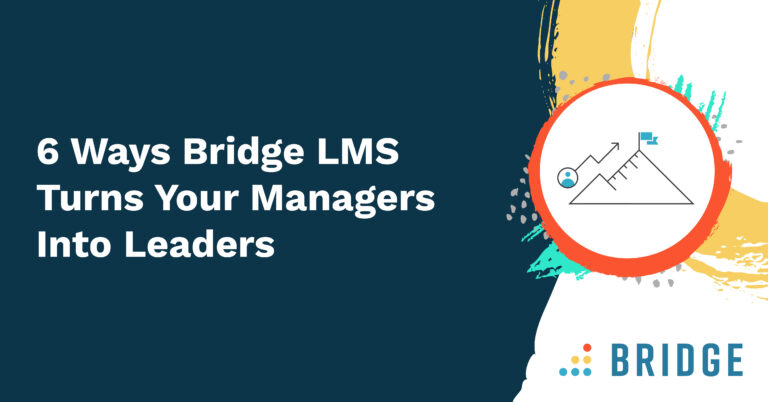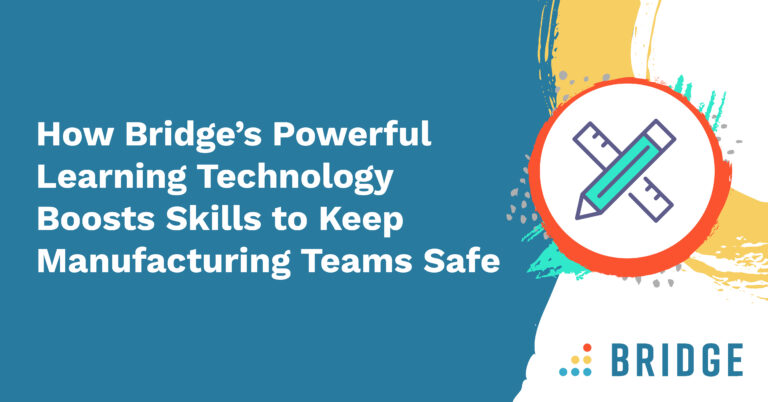Your organization’s managers are key drivers of your learning and development initiatives—but they need your support.
Read on to learn how to empower people managers in their roles and use learning tech to your advantage.
Understanding the Manager’s Role in Employee Development
When Gartner recently polled HR leaders about their priorities for 2025, manager and leader development came out on top. In fact, respondents have selected manager development as the top area of focus for the last three years.
However, despite 76% of organizations planning to increase spending on this priority, only a small percentage of HR professionals are confident that managers and leaders can meet the organization's future needs. Furthermore, 75% say that managers are increasingly overwhelmed with the expanding scope of their responsibilities.
The constraints of typical L&D programs combined with increasing workloads result in managers having less time and capacity to enable employee development.
For example, when asked about the time managers spent on development-based initiatives, responses in LinkedIn's 2025 Workplace Learning reports show a year-on-year decline in the following behaviors:
- Encouraging learning and developing new skills
- Recommending learning materials
- Helping build a career development plan
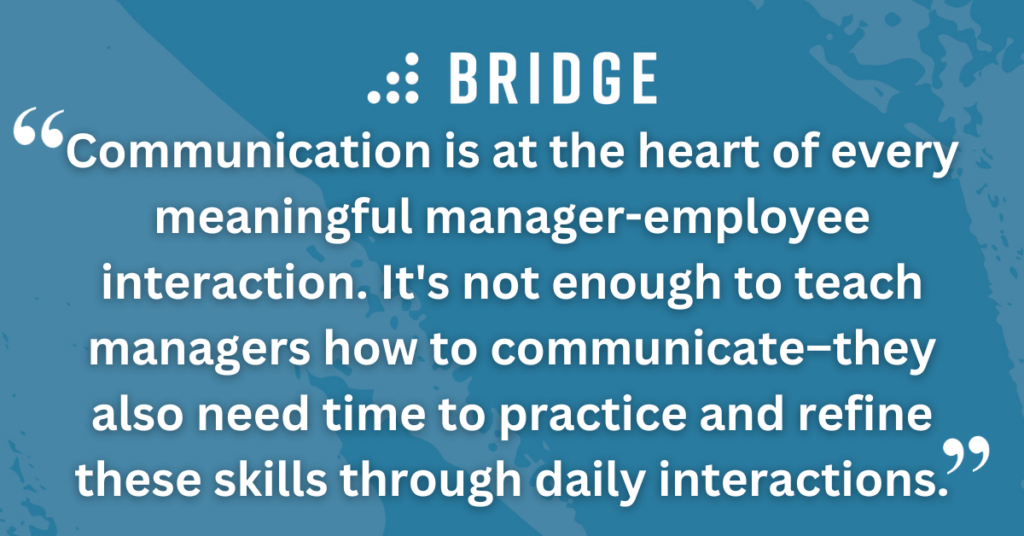
6 Ways to Enable Managers With Bridge LMS
Here are some ways you can turn touchpoints and conversations into drivers of development and use learning technology to amplify the impact of your people managers.
1) Using 1:1 Agendas to Facilitate Communication and Collaboration
Communication is at the heart of every meaningful manager-employee interaction. It's not enough to teach managers how to communicate–they also need time to practice and refine these skills through daily interactions.
Using a dedicated L&D platform with the right resources makes these conversations more productive and greatly improves the visibility of tasks and goals.
Providing agenda templates brings structure to weekly 1:1s, allowing both parties to add action items and talking points. You can also help managers develop and refine their communication skills by offering conversation prompts and question suggestions within your learning platform.
MORE TIPS TO GET THE MOST OUT OF 1:1s | ‘9 Ways to Maximize the Effectiveness of Your 1:1s’
2) Developing Coaching and Mentoring Skills Through Practical Application
Bridge-sponsored research finds that organizations are overwhelmingly turning to managers as coaches and mentors to support employee career development. They must be skilled at providing feedback and building rapport to succeed in these roles. However, according to responses from HR leaders, only 45% of managers actually have the necessary experience.
Managers need opportunities to learn, practice, and develop skills over time. You can facilitate this development by mindfully embedding social touchpoints and skills application during learning pathways.
With this approach, you enhance these capabilities over time and teach managers how to apply behaviors and skills to the range of day-to-day scenarios they're likely to face. You can make this training measurable and check skills mastery by incorporating evidence-based learning checkpoints and feedback at key points.
RELATED READING | ‘5 Ways to Build Leadership Development Programs With Bridge Journeys’
3) Encouraging Employee Career Progression With Personalized Development Plans
A personalized approach to employee development supported by your learning tech empowers employees to own their growth in pursuit of their goals, allowing managers to tailor support based on these needs.
Regular career conversations are a crucial first step, and your LMS can assist managers in aligning employees' personal goals and values with organizational objectives.
With a platform that leverages skills data, they can connect these goals to job titles and skills to make employee growth actionable. This also means it's easier to assign relevant content from their library, find skilled mentors, and set measurable goals.
HELP MANAGERS START ACTIONABLE CAREER CONVERSATIONS | ‘Discover What Drives Your Employees in Three Steps’
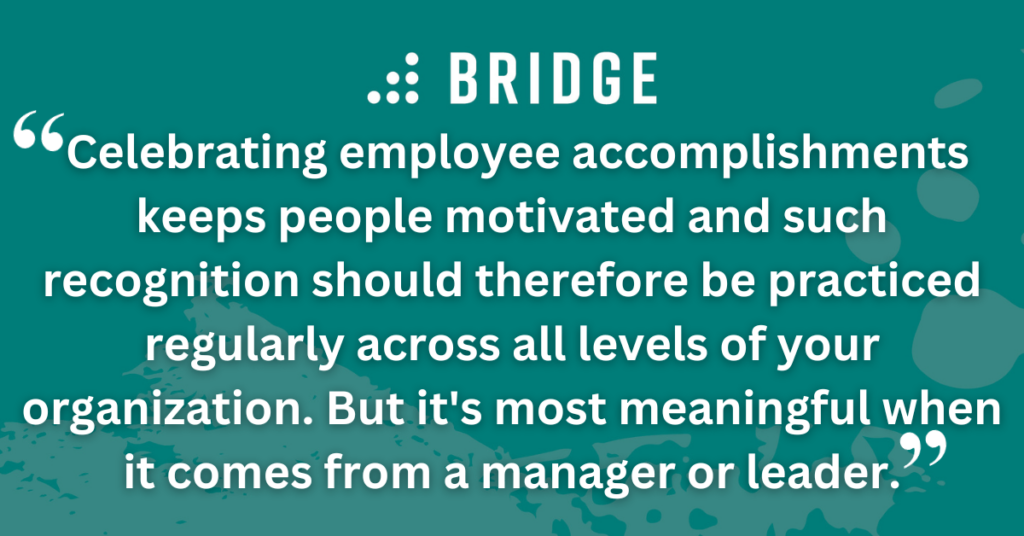
4) Prompting Feedback and Recognition
It's no secret that regular feedback fuels employee growth, and building it into your culture is all about making it habitual.
Using your L&D platform to weave feedback requests into key stages of your employee learning programs encourages frequent and timely input from managers and peers. You can also elicit the best responses by providing a structured, specific set of questions tied to skills. When managers have access to this level of detail, they can spot patterns and direct conversations with employees.
Similarly, celebrating employee accomplishments increases motivation and such recognition should therefore be practiced regularly across all levels of your organization. But research suggests it's most meaningful when it comes from a manager or leader.
Managers should regularly celebrate employee wins, both informally and using a dedicated recognition space. Making positive feedback public and tying it to goals reinforces these actions and behaviors.
KEEP READING | ‘4 Values Highly Effective Managers Cultivate’
5) Simplifying Performance Management
Performance management isn't always top of mind for time-poor managers. A continuous performance approach supported by your learning tech frees up your teams while ensuring obligations are met.
Using a single system for learning, development, and performance gives you a more transparent and streamlined approach to measuring employee performance. When managers can track employee goals, skills feedback, and learning and development, it's easier for them to assess employee performance based on these year-round insights.
Combining this information and drawing on data from peer reviews and self-evaluations helps managers and employees conduct productive and fair performance conversations.
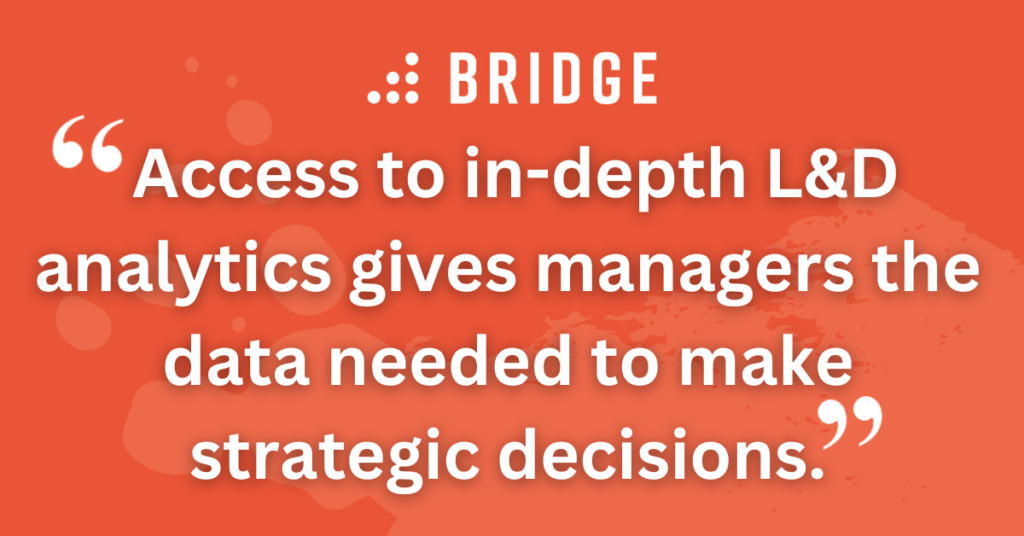
6) Making More Strategic Decisions With People Data
Access to in-depth L&D analytics also gives managers the data needed to make strategic decisions. With the ability to oversee team-wide skills coverage, managers can find gaps that might not be otherwise visible. This means they can proactively recommend relevant training and connect employees with experts, mentors, and collaborators.
In addition, filtering any team and department-level engagement survey results and trends down to your people managers makes change actionable. Managers should have insight into employee engagement data to see the drivers and impacts. This gives them the context to act on your strategies and track the results over time.
Empower Managers and Enable Growth With Bridge
Bridge's learning management system brings learning, skills-building, and development planning together in one easy-to-use platform, giving managers a single destination to collect feedback, conduct performance reviews, and make skills-based learning recommendations.
